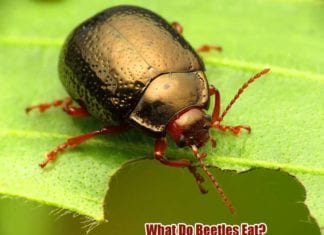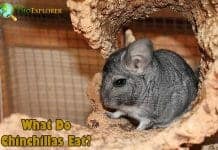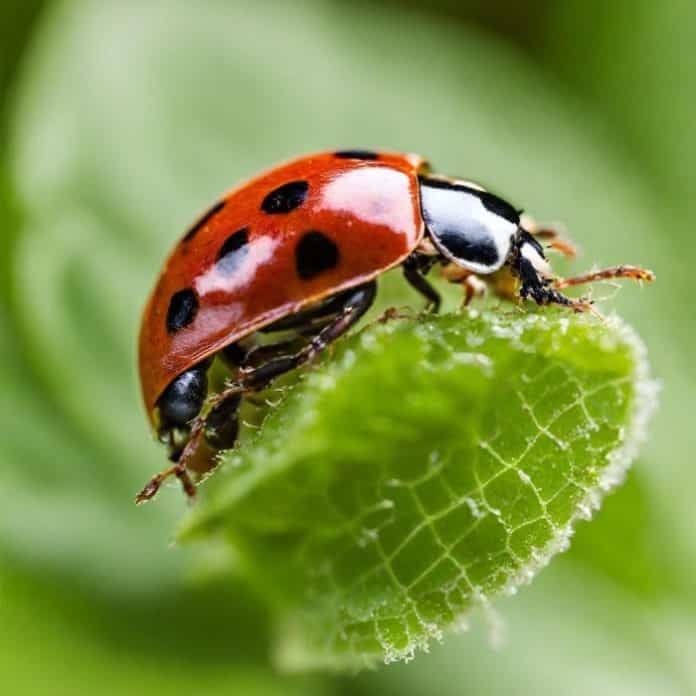
What Do Ladybugs Eat? Ladybugs, also called ladybird beetles or lady beetles, are well-known insects with hemispherical bodies and spots in various colors. These charismatic creatures are familiar sights in backyards and gardens across North America.
But what exactly is the diet of a ladybug?
Ladybugs are voracious predators, feeding mainly on plant-eating insects and pests like aphids, scale insects, and spider mites. By consuming large quantities of these agricultural pests, ladybugs provide natural biocontrol and help protect crops and gardens.
While aphids are their favorite food source, ladybugs are opportunistic feeders that will eat other soft-bodied insects if aphids aren’t available. They occasionally supplement their carnivorous diet with pollen, nectar, fruit, or plant juices.
On this page, BioExplorer explores the carnivorous and herbivorous diet of ladybugs. You’ll learn exactly what ladybugs like to eat in the wild and captivity, their hunting strategies, and why they are crucial to integrated pest management programs in agriculture.
We’ll also cover how to attract more ladybugs to your garden by providing optimal food sources.
Table of Contents
- The Primary Diet: Aphids
- Beyond Aphids: Other Insects and Foods
- The Life Cycle of a Ladybug and Its Dietary Needs
- What Do Ladybugs Eat in the Wild?
- How Do Ladybugs Hunt?
- What is the Ladybug’s Favorite Food?
- What Do Baby Ladybugs (Larvae) Eat?
- Do Ladybugs Bite or Eat Humans?
- What Do Ladybugs Drink?
- How Much Do Ladybugs Eat?
- How Often Do Ladybugs Eat?
- What Do Pet Ladybugs Eat?
- Are All Ladybugs Red?
- The Importance of Ladybugs in Pest Control
- Attracting Ladybugs to Your Garden
- Seasons and Ladybug Diet
- What Eats Ladybugs?
- Fun Facts About the Ladybug Diet
- FAQs
- Conclusion
The Primary Diet: Aphids
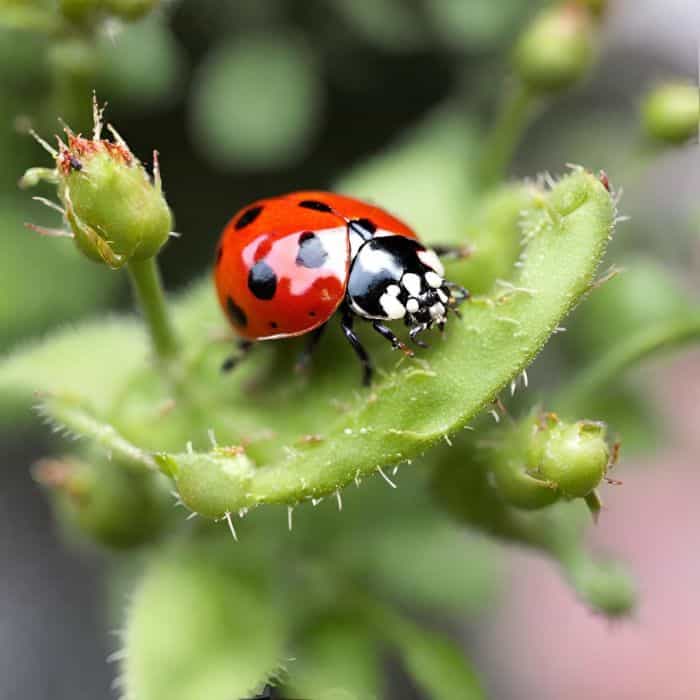
Aphids are, without a doubt, the favorite prey of ladybugs. This is because aphids are soft-bodied, relatively slow-moving, and contain high amounts of the amino acids that ladybugs require. Both adult ladybugs and larvae thrive on a diet heavy in aphids.
Why Do Ladybugs Love Aphids?
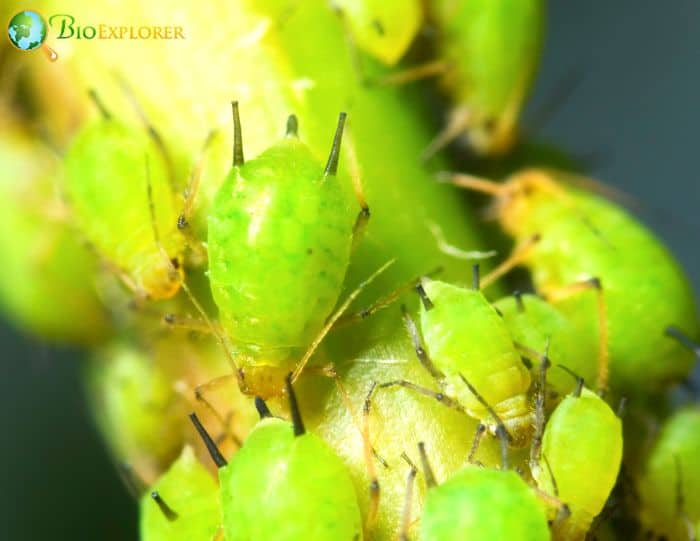
Aphids have soft bodies with little defense, making them easy for ladybugs to eat.
- Aphids are typically found clustered on plants and rarely try to escape, so they are easy targets.
- Aphids have high amounts of amino acids that ladybugs need to reproduce and thrive.
- Aphids damage crops and gardens by sucking out plant juices, so consuming them benefits plants.
The aphid-eating appetite of ladybugs is voracious:
- In laboratory studies, adult ladybugs have been observed eating as many as 50 aphids daily.
- In the wild, daily aphid consumption ranges from 10-50 depending on aphid density.
- Ladybugs will continue to eat aphids as long as they are available.
- A ladybug may eat over 60 aphids in 24 hours if aphid populations are high.
By preying on large quantities of aphids, ladybugs naturally control their populations.
- Just one adult ladybug can eliminate thousands of aphids in its lifetime.
- Releasing ladybugs is an effective integrated pest management (IPM) technique[1].
- Gardens with ladybugs require less use of insecticides to control pests.
Beyond Aphids: Other Insects and Foods
While aphids are the favorite food, ladybugs are opportunistic predators. They will eat other soft-bodied insects when aphids are scarce. They occasionally supplement their carnivorous diet with pollen, nectar, plant juices, and fruits.
Ladybugs Eat Other Soft-Bodied Insects
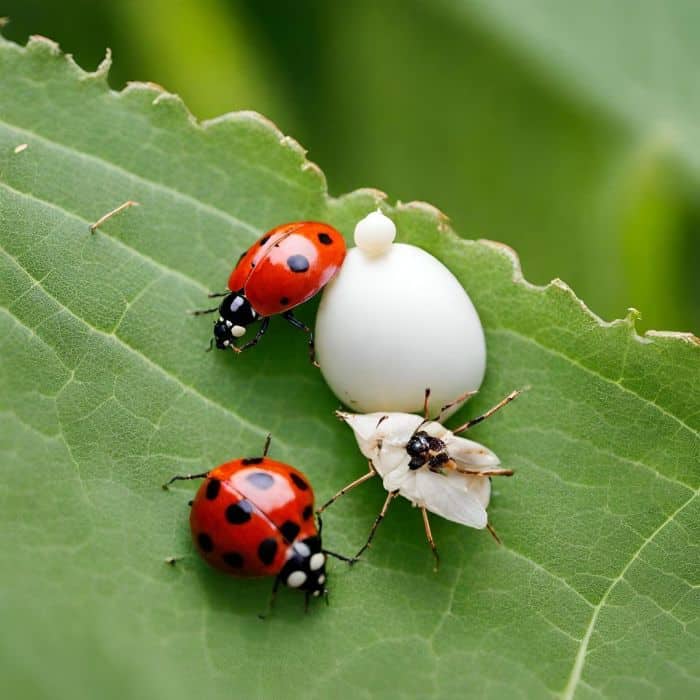
In addition to aphids, ladybugs prey on:
- Scale insects
- Mealybugs
- Spider mites
- Thrips
- Whiteflies
- Moth eggs
- Small caterpillars and larvae.
Ladybugs hunt, kill, and eat any soft-bodied insect they can capture and chew. Any insect pest that damages plants and crops may become part of a ladybug’s balanced diet.
Ladybugs May Occasionally Eat Pollen and Plants
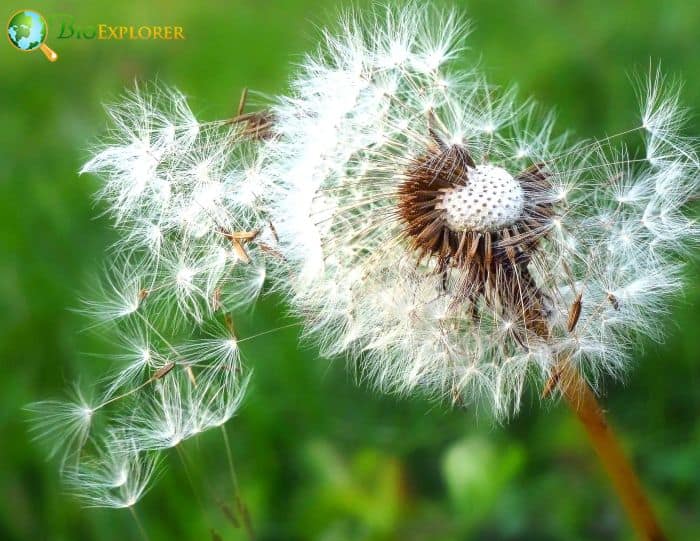
Though mainly carnivorous, ladybugs sometimes supplement their insect diet with:
- Flower pollen and nectar for protein and carbohydrates.
- Juices from fruits and plants if aphid populations are low.
- Petals, leaves, or stems of certain plants.
However, they do not actually eat or damage plant material. Any vegetation consumption is minor and secondary to their main prey of insects.
The Misconception That Ladybugs Are Vegetarians
The common myth is that ladybugs feed mainly on plants, possibly because they are often found in flowers and gardens. However, science shows their diet is over 90% insects like aphids. Any consumption of plant matter is incidental and has little nutritional value for ladybugs. They prefer to prey.
The Life Cycle of a Ladybug and Its Dietary Needs
A ladybug’s diet and appetite for prey varies greatly depending on its stage of life. Ladybug larvae eat much more than adult ladybugs. Understanding the ladybug’s lifecycle helps explain their changing dietary needs.
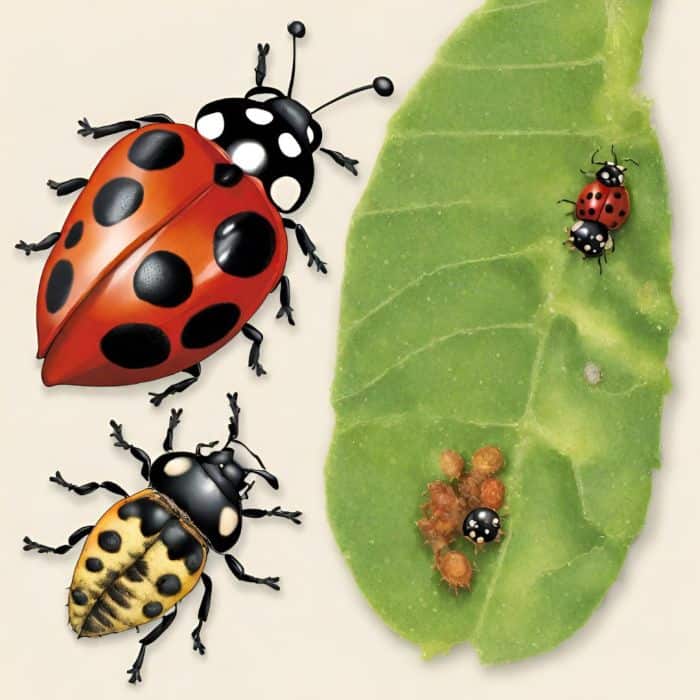
Ladybug Larvae: The Voracious Eaters
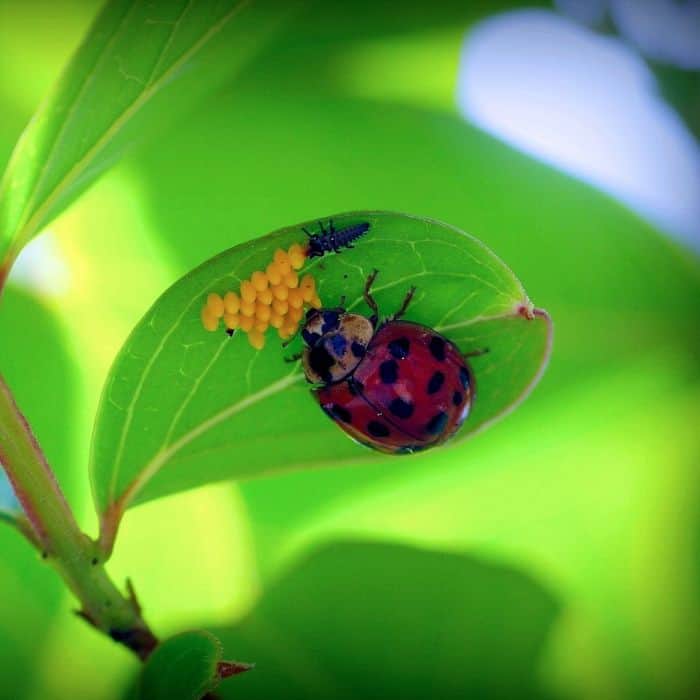
Ladybug larvae, also called ladybug babies, have an insatiable appetite:
- Larvae hatch from eggs and eat constantly over 2-3 weeks as they grow.
- Favorite foods: aphids, mealybugs, mites, scales, insect eggs.
- Larvae can consume up to 400 aphids before reaching adulthood.
- Their huge appetite controls pest populations even as juveniles.
Adult Ladybugs: The Pest Predators
Adult ladybugs eat less than larvae but still consume significant prey:
- Adults eat pollen but prefer soft-bodied insects like aphids or scales.
- Average consumption is 10-50 aphids per day, depending on availability.
- Lifetime consumption ranges from thousands to tens of thousands of aphids.
- By eating pests, adults continue protecting plants after their larval stage.
What Do Ladybugs Eat in the Wild?
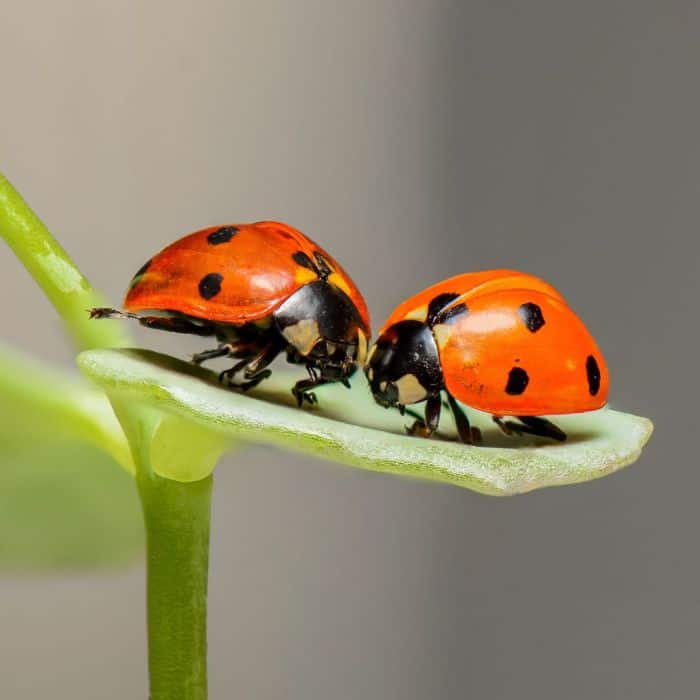
In their natural habitats, like forests and prairies, ladybugs feed on various soft-bodied insect pests that live on vegetation. Some of their favorite wild prey include:
- Aphids: Ladybugs eat several species of aphids that feed on trees, shrubs, and other plants.
- Scale insects: Soft scales are easy prey for ladybugs. Harder-shelled armored scales are avoided.
- Mealybugs: Ladybugs eat root mealybugs, vine mealybugs, and citrus mealybugs.
- Spider mites: These tiny pests are a protein-rich food source for ladybugs.
- Thrips: Thrips damage plants by sucking juices, making them tasty targets for ladybugs.
- Whiteflies: Ladybug larvae, particularly, feast on whitefly nymphs and pupae.
- Other soft insects: Ladybugs prey on caterpillars, larvae, moth eggs, psyllids, and more.
By feeding on plant pests in diverse wild settings, ladybugs help protect native vegetation and ecosystems. Their voracious appetites help control pest populations across habitats.
| Seven-spotted ladybug (Coccinella septempunctata) | Mainly aphids, also scales, mites, and other soft-bodied insects |
| Convergent ladybug (Hippodamia convergens) | Aphids, mites, scales, whiteflies, eggs of insects |
| Transverse ladybug (Coccinella transversoguttata) | Preys heavily on aphids and whiteflies |
| Twice-stabbed ladybug (Chilocorus stigma) | Specializes in eating scale insects like crapemyrtle scales |
| Spotted ladybug (Coleomegilla maculata) | A wide range of soft-bodied insects, especially aphids and mites |
| Pink-spotted ladybug (Coleomegilla maculata) | Generalist predator but prefers aphids and whiteflies |
| Eyed ladybug (Anatis ocellata) | Aphids, but also known to eat fellow ladybugs (intraguild predation) |
| Asian lady beetle (Harmonia axyridis) | A broad diet including aphids, scales, and mites |
| Mealybug destroyer (Cryptolaemus montrouzieri) | Specializes in preying on mealybugs |
| Brumoides septentrionis | Aphids, scales, and other small insects |
| Coccinella novemnotata | Consumes aphids, scales, whiteflies, and other small arthropods |
| Psyllobora vigintimaculata | Primary diet is psyllids |
| Stethorus punctillum | Specializes in spider mites |
| Olla v-nigrum | Generalist predator, but mainly consumes aphids |
| Coccinella undecimpunctata | Wide variety but favors aphids and caterpillars |
How Do Ladybugs Hunt?
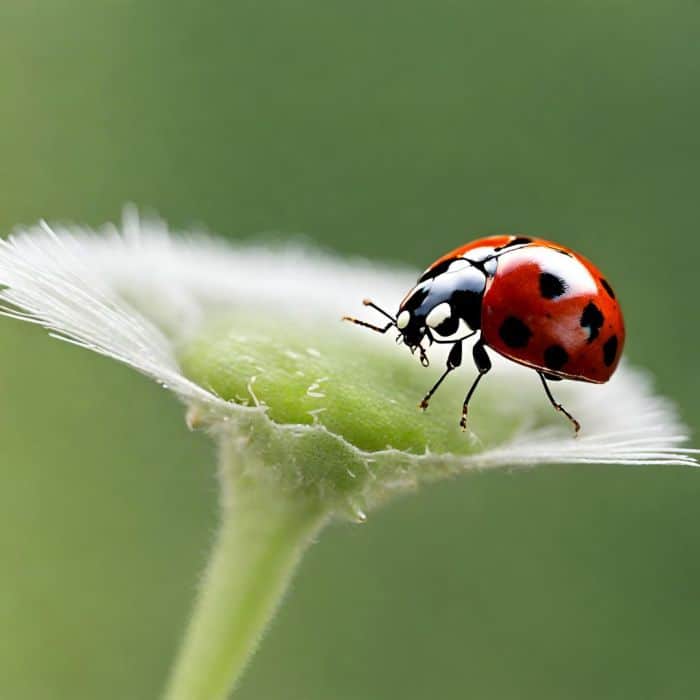
Ladybugs have several effective hunting strategies and techniques to capture prey:
- Vision: Ladybugs rely heavily on their eyesight to detect prey as they fly over plants. Their vision is very sensitive to contrast and movement. The seven-spotted ladybug uses keen eyesight to spot aphid colonies.
- Smell: Ladybugs can smell aphid pheromones and plant volatiles that signal prey is near. This scent helps guide them. The transverse ladybug picks up the scent of prey like whiteflies from a distance.
- Stealth: Ladybugs’ bright colors provide camouflage against plants and flowers as they sneak up on their prey. The pink-spotted ladybug uses its pink spots as camouflage against flowers.
- Grasping legs: A ladybug’s legs allow it to grasp and cling to plant surfaces, stalking insects from any angle. The convergent ladybug uses its strong legs to hang upside down while hunting.
- Speed: Ladybugs can swiftly pursue soft-bodied insects trying to flee. Their flying speed exceeds crawling pests. The spotted ladybug relies on its speed to catch fast-moving prey.
- Trapping: Ladybugs often hunt in groups, surrounding and trapping aphid colonies to feast on large numbers. The eleven-spotted ladybug is known for hunting in swarms.
- Chemicals: Ladybugs may paralyze prey with alkaloid secretions, making insects unable to escape. The orange ladybug is known to use chemical secretions when hunting.
- Playing dead: Some ladybugs, like the twice-stabbed ladybug, may feign death by curling up their legs when threatened, then attack prey that gets close.
- Aggregation: Large aggregations of ladybugs, like the multicolored Asian lady beetle, work together to surround and consume massive amounts of prey.
- Migration: Species like the convergent lady beetle migrate long distances to seek out new colonies of aphids/prey when food is scarce.
- Overwintering: Many ladybugs, including the seven-spotted lady beetle, hibernate together in sheltered areas during winter, enabling them to re-emerge quickly in spring.
- Playing opossum: Some ladybugs, like the transverse ladybug, pretend to be dead by lying on their backs when predators approach. This protects them from predators and surprises prey.
- Patrolling: Many ladybugs like the pink-spotted patrol plants methodically, flying slowly along branches and leaves searching for prey.
- Ambushing: Ladybugs, like the twice-stabbed, will situate themselves along the edges of leaves and ambush aphids as they pass by.
- Persistence hunting: If prey tries to escape, ladybugs like the convergent lady beetle may tirelessly pursue the prey over long distances until capturing it.
- Leaf flipping: Ladybugs such as the eleven-spotted flip over leaves to expose hidden insects to grab as prey.
Ladybugs have a powerful array of hunting adaptations that make them highly effective predators in nearly any habitat.
What is the Ladybug’s Favorite Food?
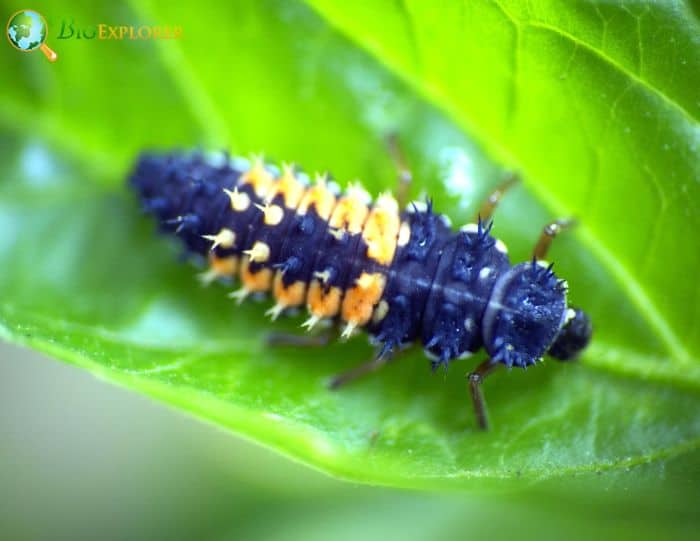
Without a doubt, aphids are the favorite food and primary prey of ladybugs. Here’s why ladybugs love feasting on aphids so much:
- Soft bodies: Aphids have a soft, thin exterior with little defense, making them very easy for ladybugs to eat.
- Low mobility: Aphids are slow, so ladybugs can easily catch them. Aphids also cluster together, allowing ladybugs to consume many at once.
- Nutritional value: Aphids are high in nitrogen and amino acids that ladybugs require for growth and reproduction.
- Availability: In most environments, aphids are plentiful and provide a reliable, abundant food source.
- Plant pests: By preying on destructive aphids, ladybugs provide natural pest control and protect plants.
In terms of convenience, nutrients, and sheer numbers, no other prey item is as perfectly suited for ladybugs as aphids. Given the choice, ladybugs will target aphid colonies over other insects in a garden or landscape.
What Do Baby Ladybugs (Larvae) Eat?
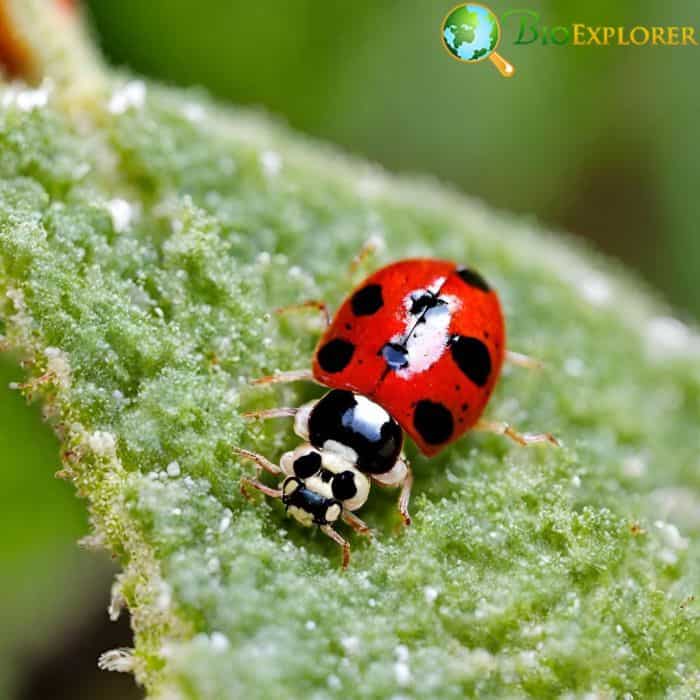
Ladybug larvae, also known as ladybug babies, have some key dietary differences from adult ladybugs:
- Aphids: Like adult ladybugs, larvae thrive on a diet high in aphids, which are soft-bodied and easily captured.
- Mealybugs: Larvae will eat root, vine, and citrus mealybugs, which are abundant pests.
- Mites: Spider mites and other mites are tiny, making them perfect prey for small larvae.
- Insect eggs: Ladybug larvae feed on the eggs of moths, butterflies, and other insects.
- Soft-bodied insects: Besides aphids, larvae eat scales, whiteflies, thrips, psyllids, and other soft prey.
- Pollen: Larvae eat very little plant material. They focus on protein-rich insects for growth.
Ladybug larvae eat ravenously to fuel their growth into adulthood. Their appetite for soft-bodied insects helps control pest populations and allows larvae to mature quickly.
Do Ladybugs Bite or Eat Humans?
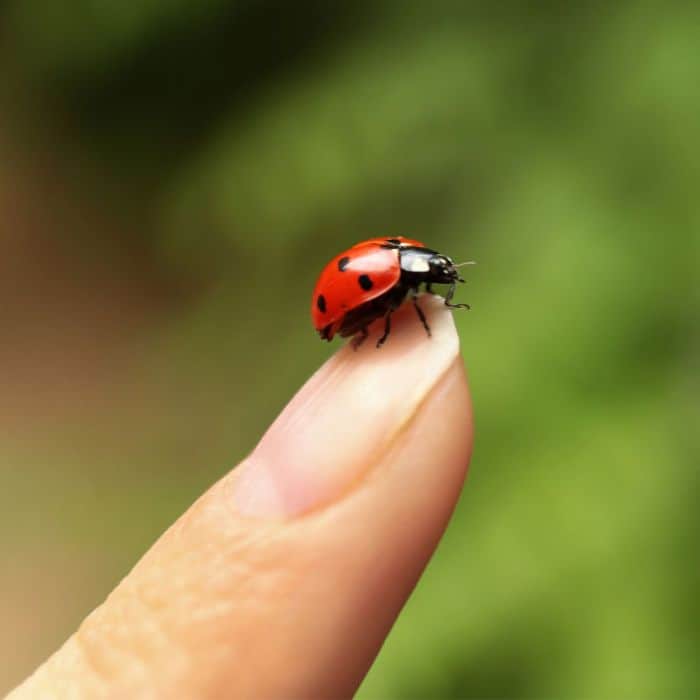
Ladybugs do not bite or feed on humans. Here are some key facts:
- No biting: Ladybugs’ mouths are designed for chewing insects, not piercing human skin. Their jaws cannot bite through people’s skin.
- No taste for humans: Ladybugs feed mainly on plant-eating insects high in nitrogen. Human blood and flesh contain little nutritional value for them.
- No harm: Ladybugs have no venom, allergens, or saliva that could cause an irritating reaction. Being bitten by a ladybug is harmless.
- Rare taste: On extremely rare occasions, a ladybug may sample a tiny bite of human flesh out of curiosity. But they immediately realize we are not prey.
- Helpful friends: Ladybugs are beneficial insects that help protect gardens and crops. They do not pose any threat to humans. Their place is outdoors in nature.
So rest assured, ladybugs have no desire to bite or feed on humans! Their diet is focused on plant-eating insect pests, making them very helpful to gardeners and farmers.
What Do Ladybugs Drink?
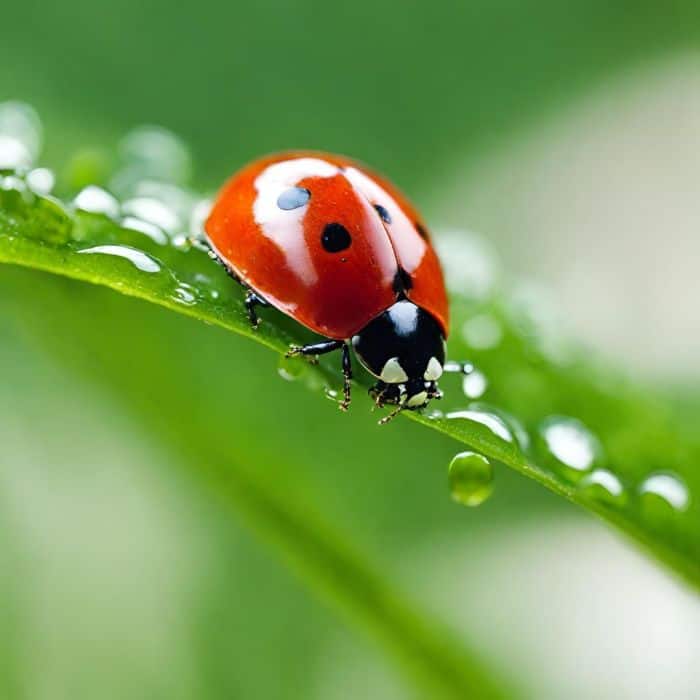
In addition to eating insects and vegetation, ladybugs need moisture and liquids to survive. Here are the main sources where ladybugs get their drinks:
- Water: Ladybugs drink water from rain droplets, dew, ponds, streams, and other natural sources. Water provides essential hydration.
- Nectar: The sugary nectar from flowers provides quick energy along with moisture. Ladybugs are often spotted drinking nectar.
- Aphid honeydew: A sugary secretion produced by aphids is an important fluid source for some ladybugs.
- Plant juices: By scraping leaves or stems, ladybugs ingest moist plant juices to maintain water balance.
- Fruits: The juice and moisture content in ripe fruits like grapes or cherries can give ladybugs hydration.
- Mammal sweat: Some ladybugs may opportunistically drink sweat from humans, pets, livestock, and other mammals.
Ladybugs can survive long periods without food, but they need access to water sources in their habitat to regularly replenish fluids lost during flight and respiration.
How Much Do Ladybugs Eat?
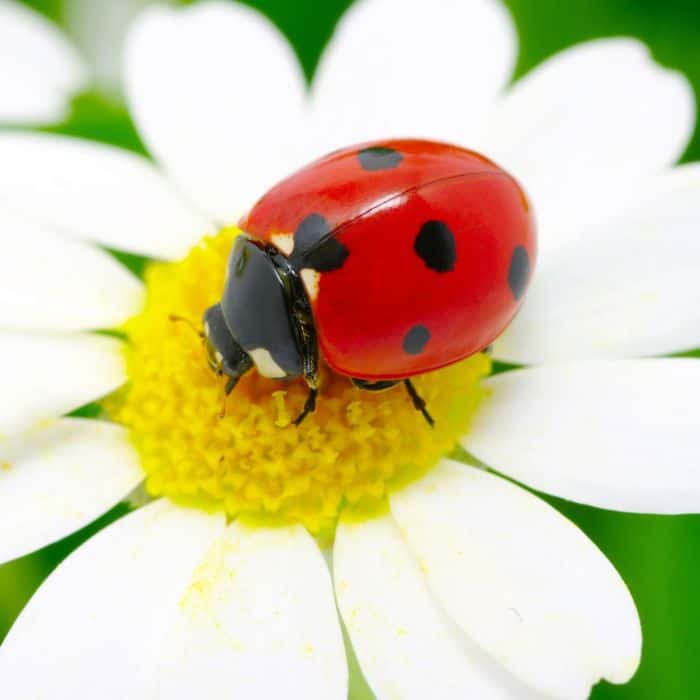
The voracious appetite of ladybugs is one of their most valuable traits for integrated pest management. How much do these tiny insects consume?
- Adults eat up to 50 aphids per day: Ladybug adults have been observed consuming 10: 50 aphids daily in lab and field studies. Their appetite depends on aphid density[2].
- Larvae eat up to 400 aphids: Ladybug larvae eat constantly during their 2-3-week development stage, devouring up to 400 aphids before pupating.
- Thousands of aphids per lifetime: The average ladybug lives 2-3 years and will eat thousands of aphids over its lifetime. Prolific individuals may eat tens of thousands.
- Essential for controlling pests: By preying on huge quantities of aphids and other pests, ladybugs prevent their populations from rapidly exploding.
- Reduce pesticide use: Places with robust ladybug populations require very little pesticide application for aphid control, demonstrating their voracious natural appetite.
The immense consumption of pests makes ladybugs an incredibly valuable form of biological control. Bringing ladybugs into gardens and landscapes is an effective way to reduce pests naturally.
How Often Do Ladybugs Eat?
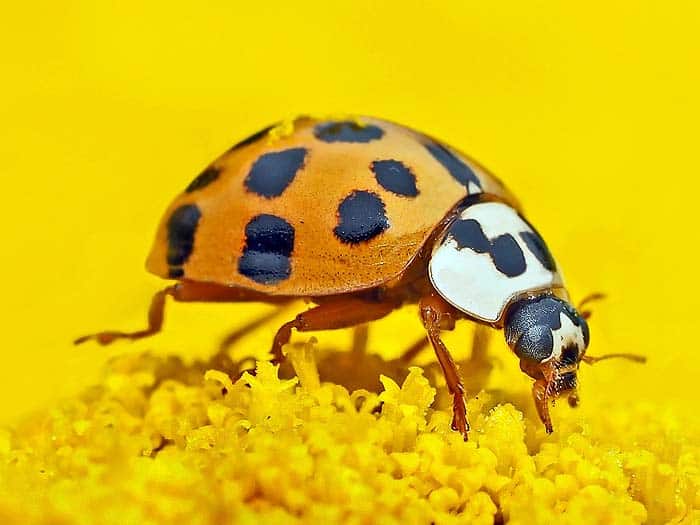
Ladybugs are active predators that feed frequently to fuel their high metabolisms and energy needs:
- Adult ladybugs eat daily when prey is available. They may eat many small meals rather than one large meal.
- Larval ladybugs eat even more frequently, sometimes constantly, throughout the day and night to support their rapid growth.
- During times of plentiful prey like dense aphid colonies, ladybugs may eat nearly non-stop, with brief pauses between hunting and feeding.
- When prey is scarce, ladybugs may go several days between feedings. Their metabolism slows to conserve energy.
- Hot summer temperatures stimulate faster feeding to meet higher metabolic demands. Colder weather means less frequent meals.
- Before winter dormancy, ladybugs eat ravenously to build up fat reserves that sustain them until spring.
- Some species, like the convergent ladybug that remains active in winter, eat prey whenever it becomes available.
The frequent feeding of ladybugs matches the abundant supply of soft-bodied arthropod prey available in most habitats. Their voracious appetites are key to suppressing pest outbreaks.
What Do Pet Ladybugs Eat?
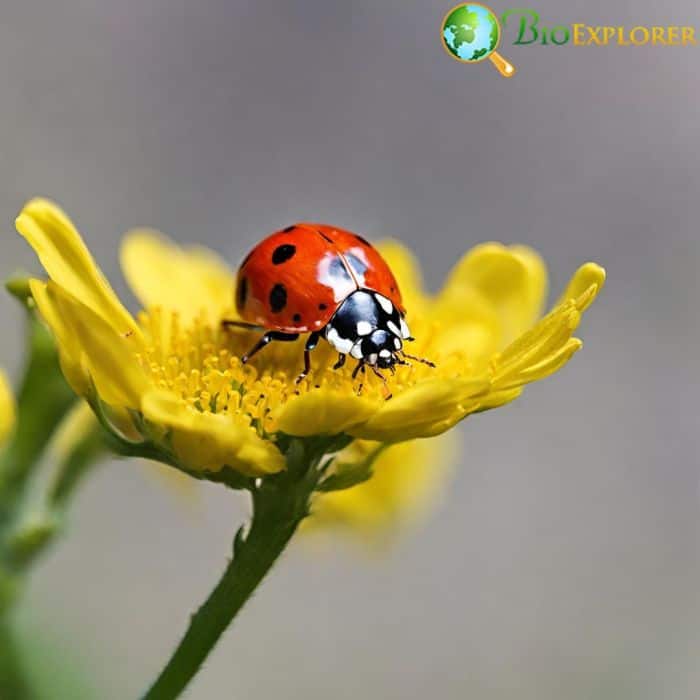
Keeping ladybugs as pets can be an educational and fun experience. Pet ladybugs thrive on a varied carnivorous diet, including:
- Aphids: If possible, feed your ladybugs live aphids as their preferred food. Aphids can often be collected from garden plants.
- Fruit flies: Flightless fruit flies are easy for pet ladybugs to catch and are protein-rich.
- Mealworms: Dead mealworms can be a substitute source of meat protein. Avoid live mealworms, which may bite ladybugs.
- Honey: A small drop of honey on a leaf or paper can provide carbohydrates.
- Pollen: Sprinkling a pinch of pollen in the habitat gives essential micronutrients.
- Water: Include damp cotton balls or a small dish topped with pebbles to prevent drowning.
For optimal health, offer your ladybugs various live prey items, substitutes like mealworms, and moisture sources. Pet ladybugs can live 1-2 years with proper care and feeding.
Are All Ladybugs Red?
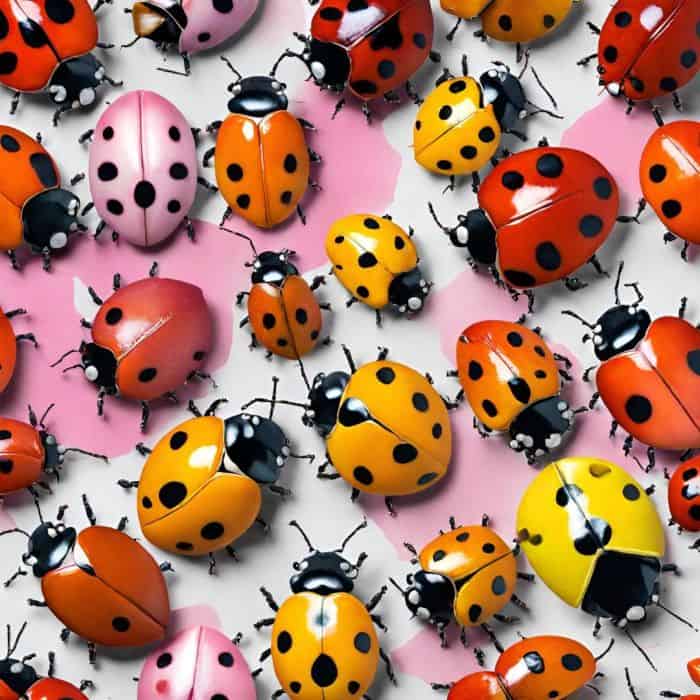
The typical ladybug has a dome-shaped, oval body with red wings and black spots. However, ladybugs actually come in a diverse array of colors and spot patterns, including:
- Red: The most common ladybug color is red, ranging from bright crimson to deep scarlet. Examples[3] are the seven-spotted (Coccinella septempunctata) and Asian lady beetle (Harmonia axyridis).
- Orange: Some ladybugs are bright orange, like the orange ladybug (Hippodamia convergens) and squash ladybug (Epilachna Borealis).
- Pink: Varieties like the pink-spotted ladybug (Coleomegilla maculata) and eleven-spotted ladybug (Coccinella undecimpunctata) are pinkish in hue.
- Yellow: Pale yellow ladybugs include the eyed ladybug (Anatis ocellata) and nineteen-spotted ladybug (Coccinella novemdecimpunctata).
- Gray: Ladybugs like the gray-spotted ladybug (Stethorus punctillum) and ash gray ladybeetle (Olla v-nigrum) are gray with faint spots.
- Black: The convergent ladybug (Hippodamia convergens) is all black with a few red markings.
- Multicolored: Certain species, like the cream-streaked ladybug (Harmonia dimidiata), have a mix of colors like orange, cream, and brown.
While colors and patterns vary, research shows most ladybug species have a similar diet dominated by aphids and other soft-bodied insects.
The Importance of Ladybugs in Pest Control
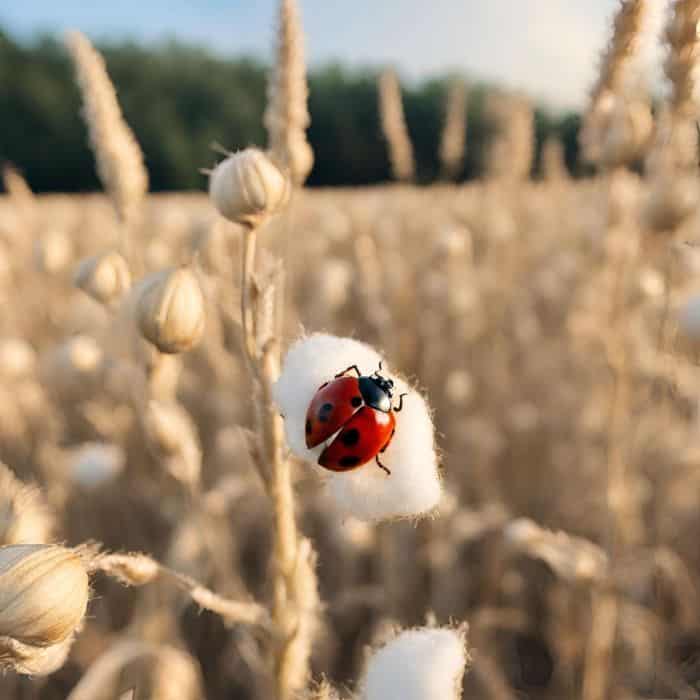
One of the most valuable services provided by ladybugs is their role as a natural defense against crop pests like aphids, mites, and scales. Here are some of the key benefits ladybugs provide:
- Voracious appetite: A single ladybug can consume over 5, 000 aphids in its 2-3-year lifetime. With voracious appetites, ladybug populations can decrease pest numbers dramatically. In one study, releasing 130 ladybugs per plant reduced aphid populations by 80% in a cotton field.
- Protect crops: Ladybugs prey on common agricultural pests like soybean aphids, Colorado potato beetles, and pecan aphids. This significantly reduces crop damage and plant loss from pests. One study found ladybugs decreased potato loss to beetles from 60% to only 4%. .
- Improve yields: With fewer pests draining plant nutrients, ladybug-protected plants experience less stress and loss, allowing them to grow larger and produce higher crop yields[4]. Releasing ladybugs in pecan groves increased average yields by 30%.
- Reduce pesticide use: A single application of ladybugs can control aphids all season[5]. This greatly decreases the amount and cost of pesticides needed, saving farmers money. Using ladybugs[6] reduced soybean insecticide use by 60-100% in field trials.
- Resist pests adapting: While pests often genetically adapt resistance to pesticides, they are unlikely to adapt defenses against ladybug predation. Releasing ladybugs is a sustainable long-term strategy.
- Conserve biodiversity: uncontrolled pests can completely destroy sensitive plant species. Ladybugs help preserve biodiversity that may otherwise be lost.
Suggested Reading:
What Do Beetles Eat?
Attracting Ladybugs to Your Garden
Many gardeners actively try to attract beneficial ladybugs to help control pests naturally[7]. Here are some tips for drawing ladybugs to your garden habitat:
Why You Might Want Ladybugs in Your Garden?
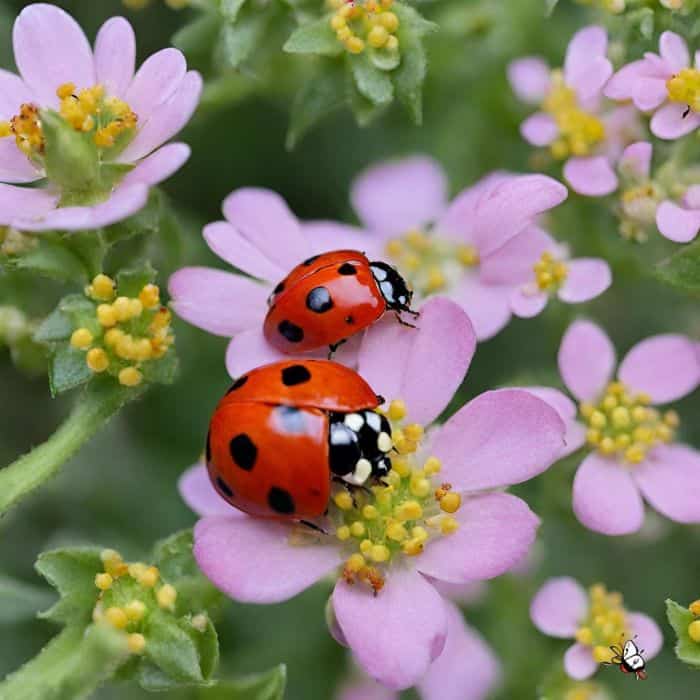
- Provide natural aphid control without pesticides: Ladybugs are voracious predators of aphids, eliminating the need for chemical pest control.
- Reduce damage to plants from soft-bodied pests: Ladybugs feed on soft pests like mealybugs and mites, preventing them from damaging garden plants.
- Increase pollination with more ladybugs visiting flowers: Adult ladybugs supplement their diet with pollen and nectar, benefiting plant pollination.
- Observe and enjoy these beneficial insects in your garden: Ladybugs are colorful, fascinating insects that are fun to watch feeding on pests.
Tips to Attract Ladybugs
- Plant small-flowered species like angelica, Candytuft, cilantro, dill, and fennel: Ladybugs attract plants with accessible nectar and pollen.
- Have a water source like a bird bath, fountain, or damp soil: Ladybugs must drink water regularly from dew, puddles, or other sources.
- Allow aphids and other prey to establish before releasing ladybugs: Ensure the ladybugs you purchase or attract have an adequate food supply.
- Create rock piles or log shelters for winter hibernation: Ladybugs need protected spots to overwinter dormantly until spring.
- Avoid pesticide use, which may repel or kill ladybugs: Pesticides make gardens inhospitable for ladybugs. Use organic approaches instead.
- Purchase and release ladybugs from a garden store or supplier: Releasing new ladybugs can quickly boost their population in your garden. Opt for species native to your area.
Seasons and Ladybug Diet
A ladybug’s diet and feeding habits change yearly as seasons and food availability shift. Different ladybug species have adapted behaviors for each season:

Spring
- Native species like the convergent ladybug feed on abundant new growth of aphids and other soft pests.
- The seven-spotted ladybug supplements its diet with flower nectar and pollen as plants bloom.
- Well-fed Asian lady beetles lay more eggs in spring to boost summer populations.
![]()
Summer
- The spotted ladybug preys heavily on peak aphid, mite, and scale populations during the warm summer.
- Pink-spotted ladybugs drink nectar from flowers to obtain moisture and energy for hunting.
- Ash gray lady beetle larvae hatch and eat constantly to fuel their rapid summer growth.
![]()
Fall
- The transverse ladybug shifts its diet to mites, mealybugs, and other pests as aphids decline in fall.
- The two-spotted ladybug consumes ripening fruits and vegetable sap.
- The orange ladybug builds up fat reserves to survive winter dormancy.
![]()
Winter
- Like the convergent, most ladybugs enter diapause dormancy, requiring no food.
- Some, like the multicolored Asian lady beetle, remain active, eating scale insects on evergreens.
- The seven-spotted ladybug congregates with others under bark or rocks to overwinter.
![]()
What Eats Ladybugs?
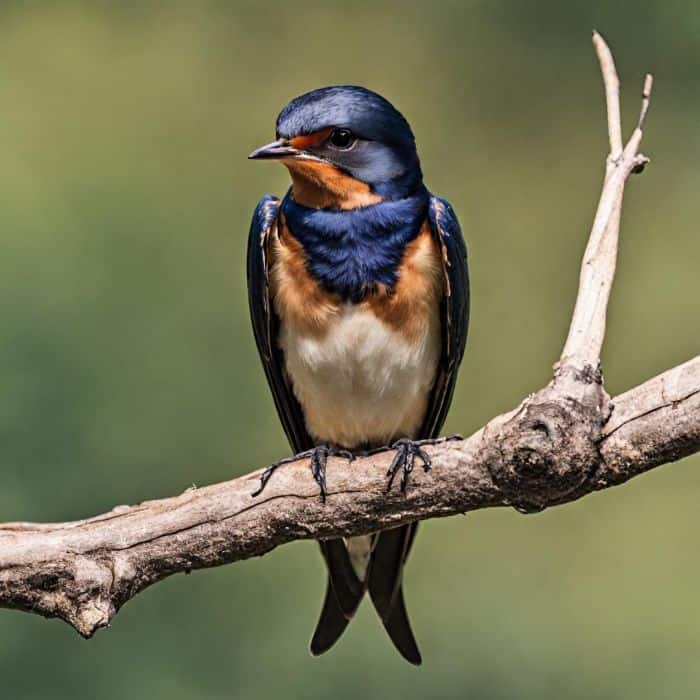
Despite their armored exterior, ladybugs do have some natural predators that eat them as prey:
- Birds: Insect-eating birds like barn swallows’ prey on seven-spotted ladybugs. In contrast, cliff swallows consume large numbers of multicolored Asian lady beetles. Chickadees may eat overwintering transverse ladybugs.
- Spiders: Orb-weaver spiders can trap and eat pink-spotted ladybug adults. Funnel-web spiders’ prey on convergent ladybug larvae[8].
- Ants: Aggressive red imported fire ants attack and kill ash gray lady beetle pupae. Argentine ants consume mealybugs, parasitized by the cryptolaemus ladybug.
- Assassin bugs: Wheel bugs pierce adult spotted ladybugs with their rostrum and suck out their fluids. Masked hunter nymphs attack eleven-spotted ladybug nymphs.
- Green lacewings: Larvae of the common green lacewing eat eggs of the transverse ladybug. Adults prey on orange ladybug adults.
- Dragonflies: Nymphs of the variegated meadowhawk dragonfly hunt convergent ladybug larvae. Blue dashers prey on flying orange ladybug adults.
- Preying mantises: Chinese mantids are powerful predators of seven-spotted ladybugs. Carolina mantids eat pink-spotted ladybug juveniles.
While ladybugs have formidable defenses, they face predation from certain insect, bird, and spider species. However, prolific reproduction allows their populations to persist[9].
Fun Facts About the Ladybug Diet
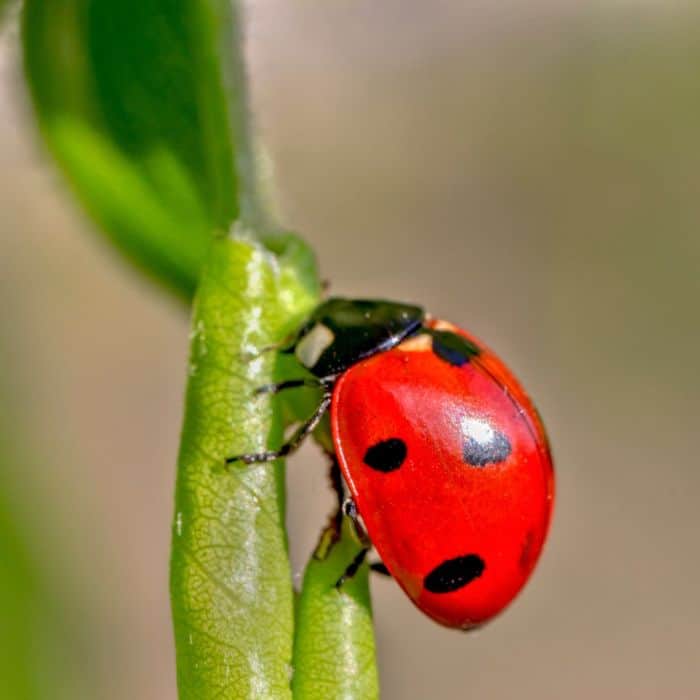
Ladybugs have some fascinating biology and behaviors related to their diet and hunting strategies:
- According to one University of Kentucky study[10], Ladybug larvae eat more than adult ladybugs, consuming up to 400 aphids before pupating. A single lady beetle may consume as many as 5,000 aphids in its lifetime.
- The convergent ladybug can detect aphid scents up to 1 kilometer away to locate prey patches based on research from NIH study[11].
- Ladybugs can survive up to 2 months without food, living off stored fats, as shown by a study from Auburn University.
- The seven-spotted ladybug is the most common species in North America, with a huge appetite for aphids, making up over 75% of the ladybug population per one USDA study.
- Ladybugs will play dead[12], dropping off plants and curling up to avoid being eaten by predators, reducing predation rates by up to 90% in lab observations.
- The Asian lady beetle was brought to North America to control pests but is now an invasive species that comprises 1/3 of ladybugs in some areas, per a Cornell ecology study[13].
- Ladybugs use their legs to taste and identify prey before consuming them[14], having taste receptors on their tarsi, according to entomologists at UC Berkeley.
- The name “ladybug” originated in medieval Europe when they were associated with the Virgin Mary as written in historical religious texts[15].
- Ladybug spots and colors act as a warning signal that they are toxic and foul-tasting to potential predators, reducing predation in experiments[16].
- Ladybugs will congregate by the thousands in mountain valleys to find sites for winter hibernation, documented by researchers in California and Colorado[17].
FAQs
Do ladybugs eat their own kind (cannibalism)?
Ladybugs generally do not exhibit cannibalistic behavior except in a few limited circumstances:
- Ladybug larvae may eat eggs and younger larvae of their own species if food is scarce and they are at risk of starvation. However, this is rare.
- Some ladybug species, like the eyed ladybug, sometimes eat other ladybug species in a behavior called intraguild predation. But they still preferentially eat soft-bodied pest insects first.
- Overcrowding combined with limited food may cause larvae to resort to cannibalism of eggs or injured siblings. But ample space and prey prevent this.
- Adult ladybugs rarely eat other ladybugs. There is no evidence they purposefully cannibalize each other as a regular part of their diet.
- Eating other ladybugs provides little nutritional benefit compared to their normal insect prey. So, there is a minimal evolutionary advantage to cannibalism.
In summary, while ladybug larvae may resort to limited cannibalism under starvation conditions, healthy ladybugs living in their natural habitats rarely exhibit cannibalistic or carnivorous behavior toward each other. Their normal diets remain focused on soft-bodied pest insects, not other ladybugs. Their food preferences, hunting behaviors, and morphology are adapted for eating typical prey species, not their own kind.
Where do ladybugs live, and are they different types?
Ladybugs are highly adaptable and can live in various environments. They are seen in forests, cities, suburbs, and along rivers. There are about 5,000 species of ladybugs worldwide exhibiting a variety of colors and patterns. However, most people are familiar with the red or orange variety with black spots.
Can ladybugs be harmful to the plants in your garden?
Contrarily, ladybugs are incredibly beneficial for the plants in your garden. They are natural predators of many pests, such as aphids, which can damage plants. The rising population of ladybugs in your garden is a good sign that your garden is healthy.
How do ladybugs contribute to the food chain?
Ladybugs are an integral part of the food chain. They maintain the balance by preying on aphids and other small insects, which could destroy plant life if uncontrolled. Certain types of birds and insects also consider ladybugs as their food source.
Are ladybugs active in the winter months?
Most ladybug species aren’t active in winter and tend to hibernate. However, ladybugs are most active and hungry when they wake up in the spring. They start feeding on aphids, mites, and other soft-bodied insects.
Where do female ladybugs lay their eggs?
Female ladybugs lay their eggs close to colonies of aphids and other small insects. This provides the ladybugs’ larvae immediate access to food after hatching.
Why do some people sell live ladybugs?
People sell live ladybugs because they are beneficial insects in your garden. They are voracious predators of aphids and other harmful insects. When introduced into a garden, they can help control pest populations, reducing the need for harmful pesticides.
Is it true that ladybugs eat other insects?
Yes, it is true. While their primary food source is aphids, ladybugs eat various other insects like mealy bugs, spider mites, and scales. This is the reason why they’re called a gardener’s best friend.
Do all ladybugs eat aphids and other insects?
Most types of ladybugs do eat aphids and other small insects. However, some types, like the Mexican bean beetle and the squash beetle, are plant eaters and primarily consume vegetation.
![]()
Conclusion
In conclusion, ladybugs are remarkable insects with fascinating dietary ecology and biology. Their voracious appetite for pests greatly benefits natural pest control and plant health.
Key takeaways about the ladybug diet include:
- Ladybugs are primarily carnivorous, feeding mainly on soft-bodied insects like aphids, scales, and mites. This provides natural biocontrol of crop pests.
- While aphids are their favorite prey, ladybugs are opportunistic and eat other insects when available. They occasionally supplement with nectar or plant materials.
- A ladybug’s diet and food intake change over its lifecycle. Larvae consume up to 400% more than adult ladybugs.
- Different ladybug species utilize various hunting strategies and techniques to capture insect prey effectively. Their varied coloration also aids camouflage while hunting.
- Attracting ladybugs to gardens by providing suitable food plants and habitats encourages natural pest control and plant health. Their ecosystem services are invaluable.
- Ladybugs face threats from some predatory bird, insect, and spider species. However, their prolific reproduction enables their populations to thrive.
Ladybugs clearly demonstrate the close interconnections between species in ecological communities. Their specialized dietary behaviors and adaptations showcase the remarkable diversity of insect lifestyles and survival strategies.
Understanding ladybug diets gives us useful biocontrol applications and an appreciation for nature’s ingenuity.
![]()


